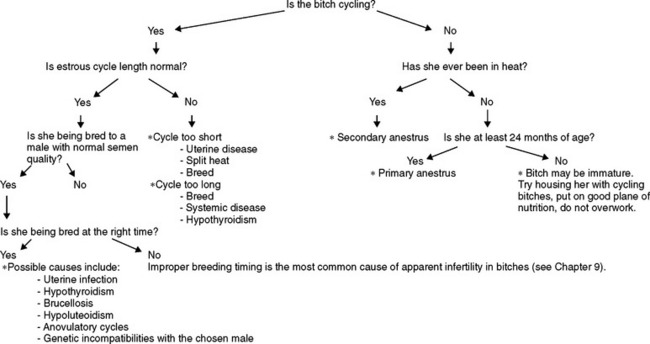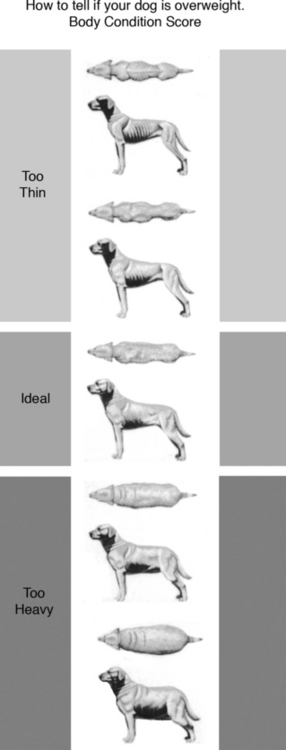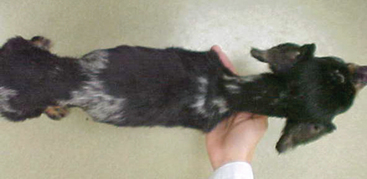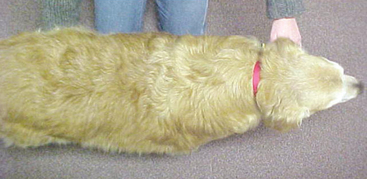19 Infertility
The most common cause of apparent infertility in bitches is breeding at the wrong time.
There are many reasons for infertility in female dogs (Figure 19-1). The diagnostic scheme used varies with cycling activity of the bitch.
When presented with a bitch with primary anestrus, I do the following:
If all test results are normal and housing the dog with cycling bitches does not induce estrus, medical estrus induction may be attempted. Historically estrogen has been used to induce estrus. A synthetic form of estrogen, diethylstilbestrol (DES), is administered orally for about 9 days or until proestrus begins. Excellent success with this method is reported in the literature, but I have had equivocal success. Another technique that can be used to induce estrus in bitches is prolactin inhibition, with either bromocriptine (Parlodel) or cabergoline (Dostinex). Both are administered until proestrus is induced. Mean duration of treatment with cabergoline is reported to be 16 days. Bromocriptine is inexpensive but may cause vomiting. Cabergoline has virtually no side effects but is expensive in the United States. Reported percentages of bitches entering proestrus and becoming pregnant with bromocriptine treatment are 92% and 83%, respectively. Reported percentages of bitches entering proestrus and becoming pregnant with cabergoline treatment are 96% and 90%, respectively. There are anecdotal reports of the use of PG600, a pig product containing a hormone that mimics effects of LH and follicle-stimulating hormone (FSH), and the use of gonadotropin-releasing hormone (GnRH) as a single injection or series of injections, or as an implant to induce estrus in bitches. Work with GnRH still is experimental.
Bitches that have cycled in the past but have not cycled in 1 year are considered to have secondary anestrus. Possible causes include the following:







